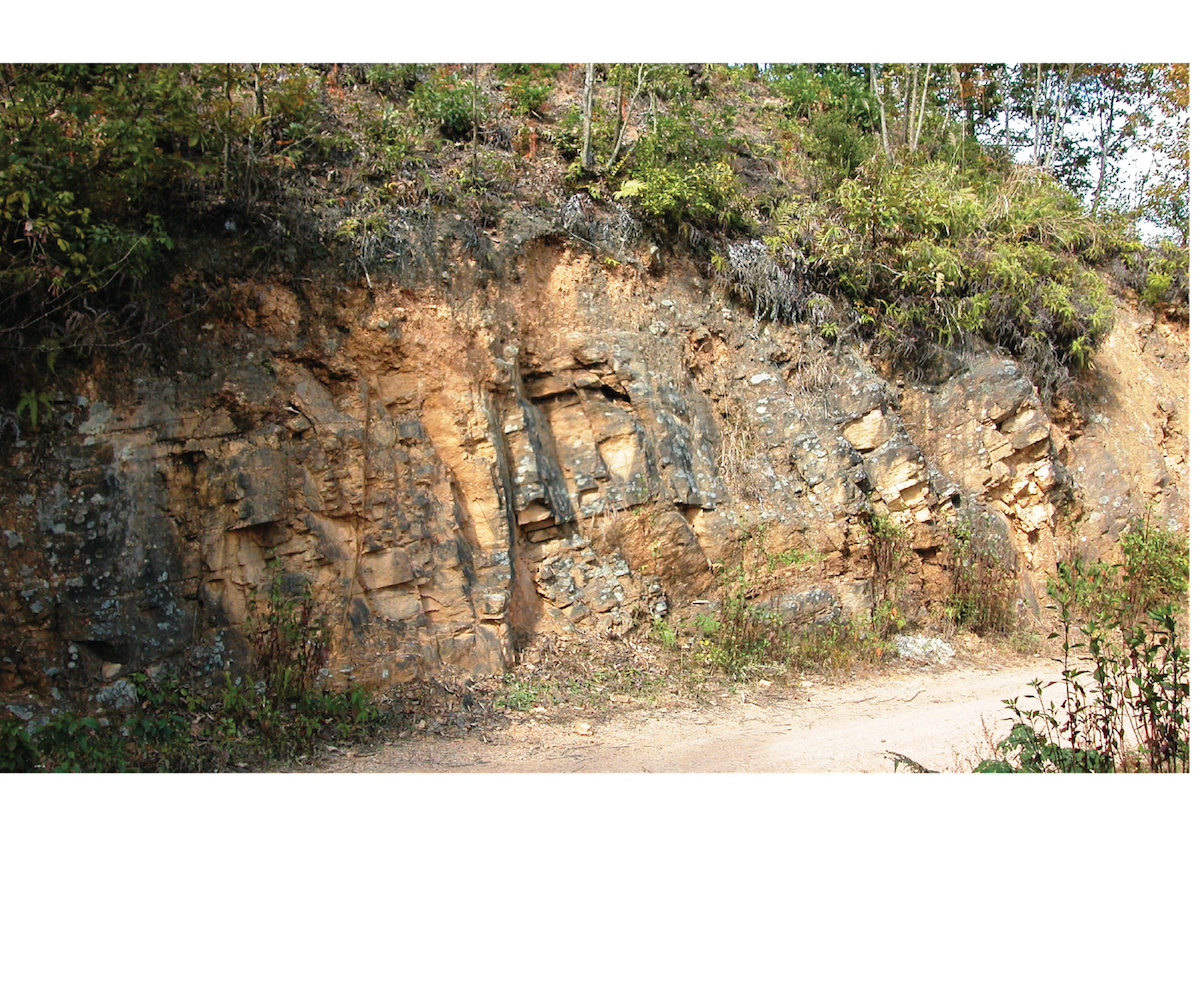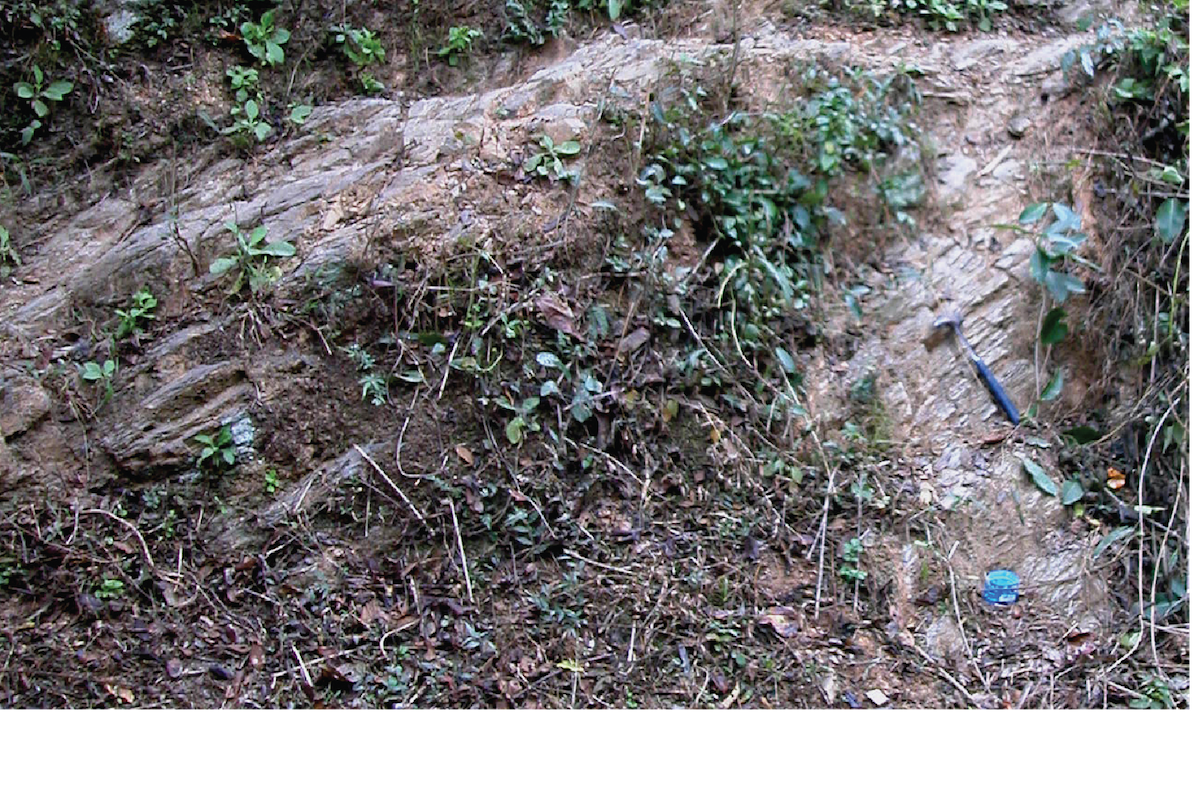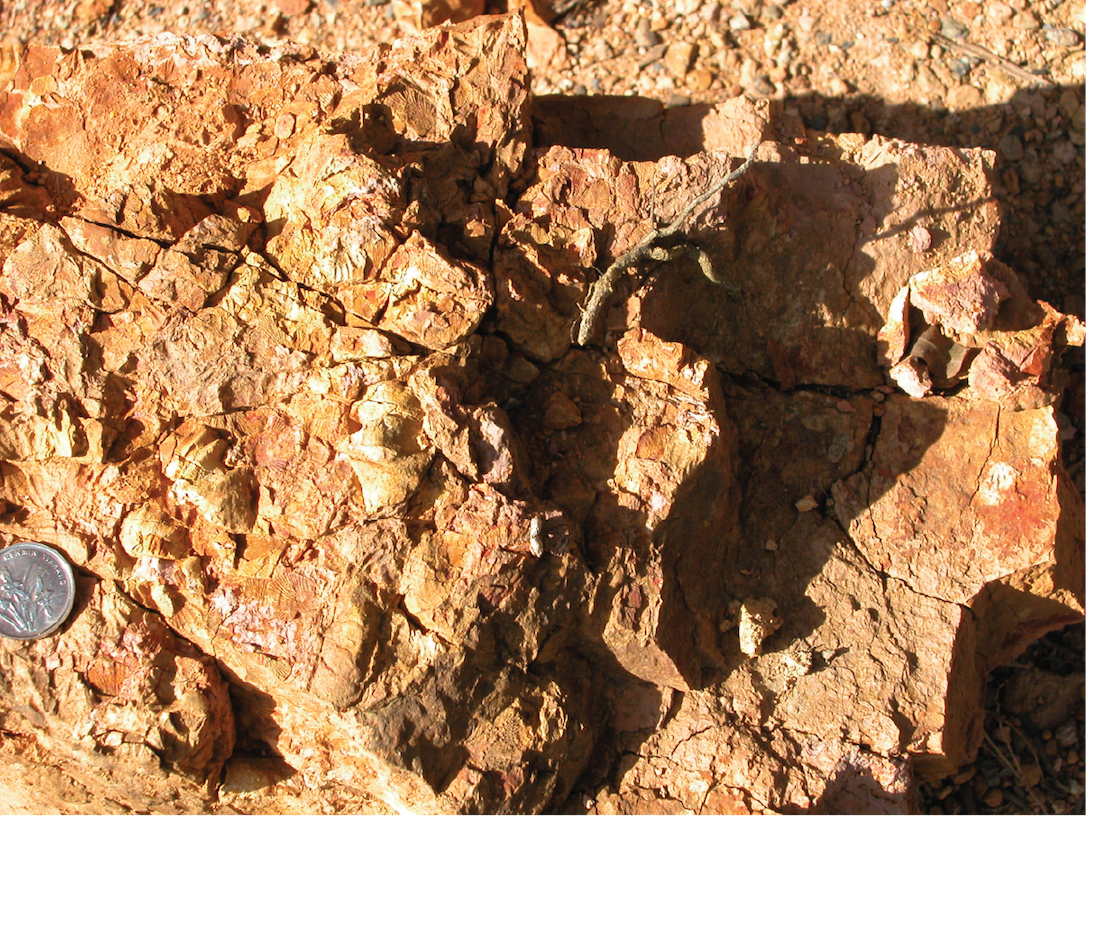Pojiao Fm
Type Locality and Naming
The original type section is located at Village Pojiao, nearby Xiyang Street west of Guangnan County, Yunnan. Yunnan Regional Geological Survey proposed a lectostratotype section at the Xizhanggou, 15 km east of Daliantang Town, Guangnan County (105o08’E, 24o08’N).
Yin T. H. in 1938 described a small fauna from three localities about 15 km southeast of Guangnan (=Kuangnan) County of Yunnan, of which the richest one was from Pojiao village (Yin, Bulletin of the Geological Society of China, 1938. vol. 18, no.1, pp. 33-56, pl.5). Therefore, it was named by Yin as the Pojiao Shale, which consists of a set of brown, reddish yellow and gray shales but no stratigraphic section was recorded. However, geological mapping indicates that there is no Devonian sediments around the area, even the name of Pochiao is also unknown. However, the strata containing Euryspirifer tonkinensis fauna are widely distributed in southeast Yunnan and southwest Guangxi.
Synonym: Pojiao Shale, Pochiao Fm
Lithology and Thickness
Claystone. It is characterized by mudstone, medium- to thin-bedded mainly gray, grayish-green and purplish-red silty mudstone and siltstone. Some layers of clayey limestone occurred in the upper part of the formation. It is 150 m thick.
[Figures Pojiao Formation near the Xiyangjie village along the county road No.350 showing the thin bedded mudstones (length of hammer 26 cm).]
Relationships and Distribution
Lower contact
The formation conformably overlies on the siltstone of Posongchong Fm (Guangxi), or Cuifengshan Gr (Yunnan). Sometimes it overlaps on the different strata of Cambrian or Ordovician.
Upper contact
The formation is locally overlain by the Dacaozi Fm or the Qingmen Fm (Yunnan), former lower Chehe Fm (now Tangding Fm), Bajiaoqing Fm, Sanchahe Fm Daliantang Fm, and Qingjia Fm (Guangxi)
Regional extent
It is mainly distributed in Wenshan, Guangnan, Funing area of southeastern Yunnan and Zhaotong area of northeastern Yunnan, as well as Napou, Jingxi, Debao and Chongzuo area of southwestern Guangxi. The thickness ranges from 43 m to 934 m, generally 160-350 m. In the eastern Yunnan it has only 8-87 m thick. Revised strat columns (Hongfei Hou, Apr2021) also extended this name to NW Guangxi (Nandan, revised column 63).
GeoJSON
Fossils
It yields abundant Brachiopods Rostrospirifer tonkinensis and Dicoelostrophia punctate; coral Calceola sandalina acuminata, Microcyclus intercalaris. Xystriphylloides nobilis; Bivalvs Tolmania sp., Actinopteria sp., Paracyclus sp., Modiomorphia sp.; and Trilobites Gravicalymene maloungkaensis, Dechenella liujiangensis, Proetus indosinensis.
[Figure Pojiao Formation near the Xiyangjie village along the county road No.350 showing the brachiopods bed, which is commonly seen in the areas (diameter of coin 1.9 cm).]
Age
Depositional setting
It is interpreted as an intertidal to subtidal shallow marine sandy and muddy environment.
Additional Information


